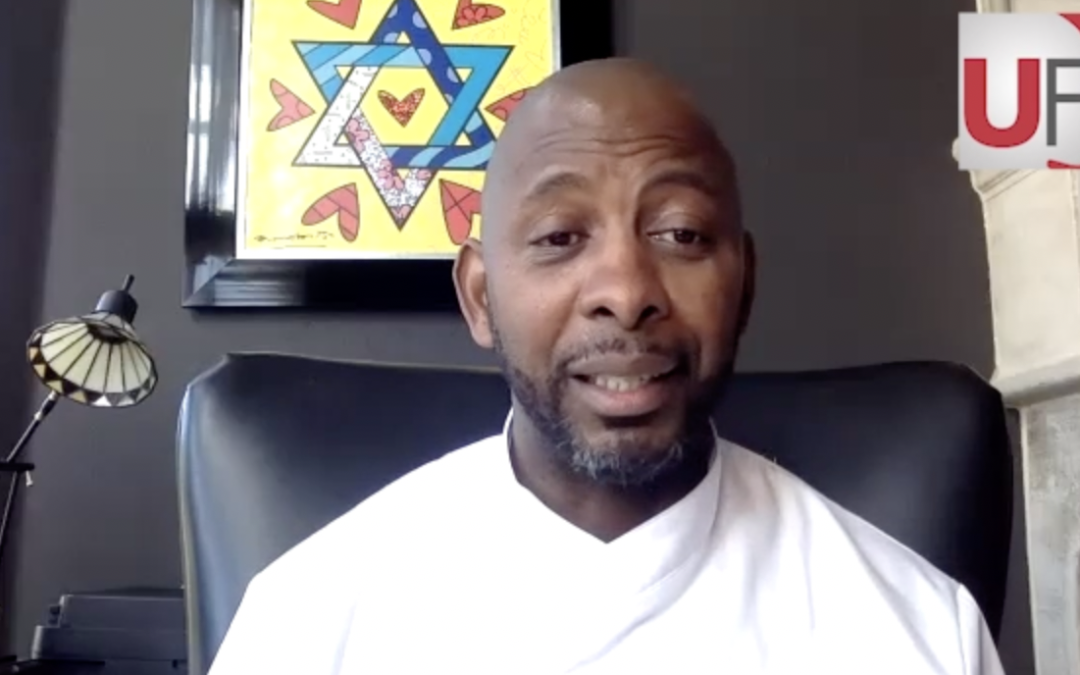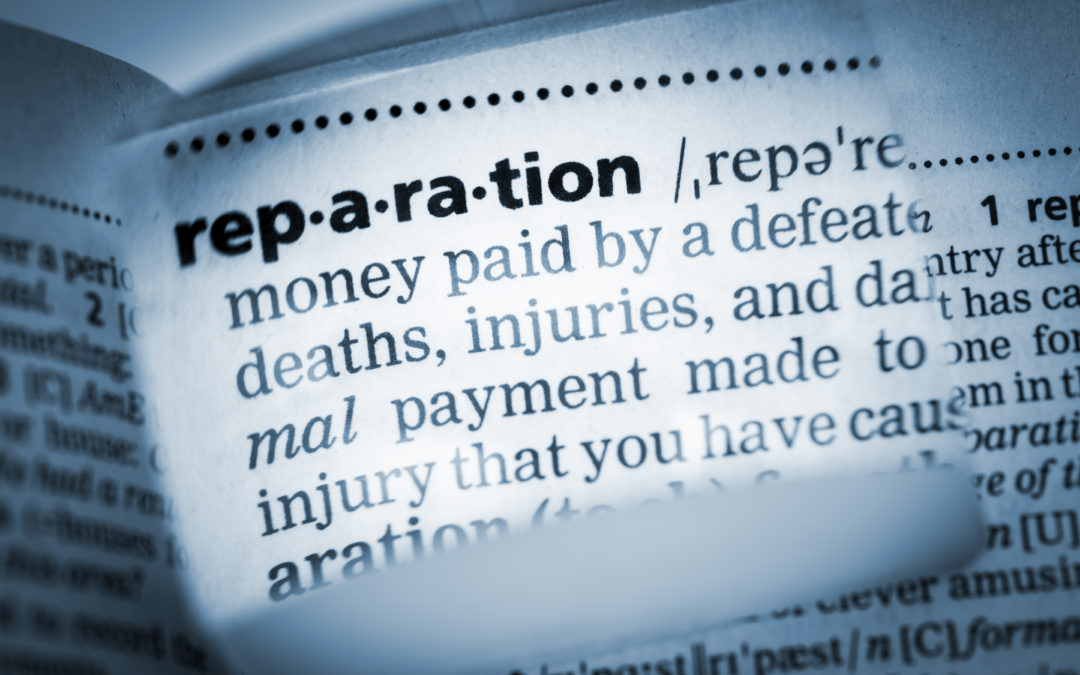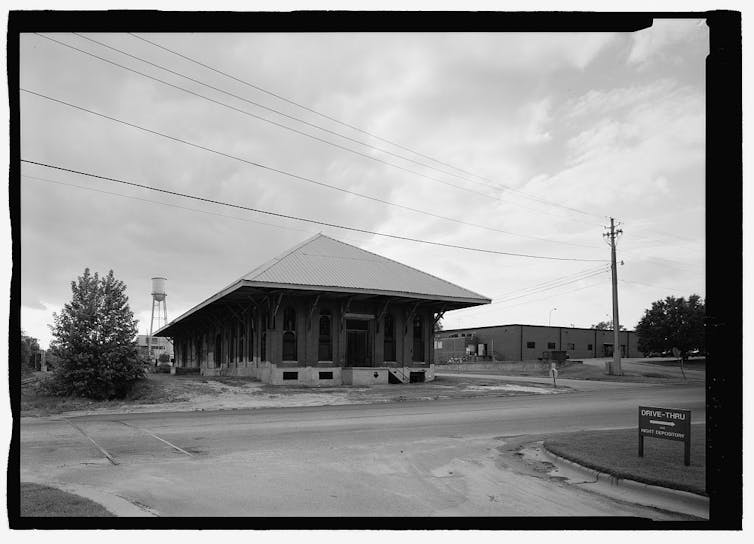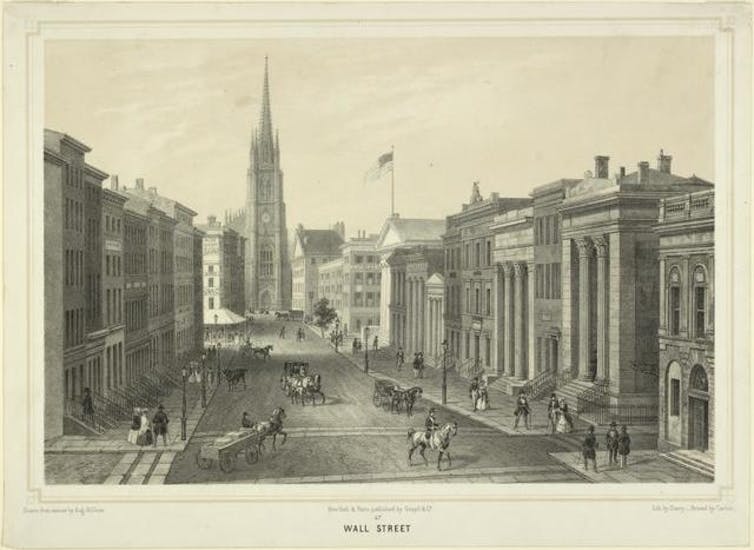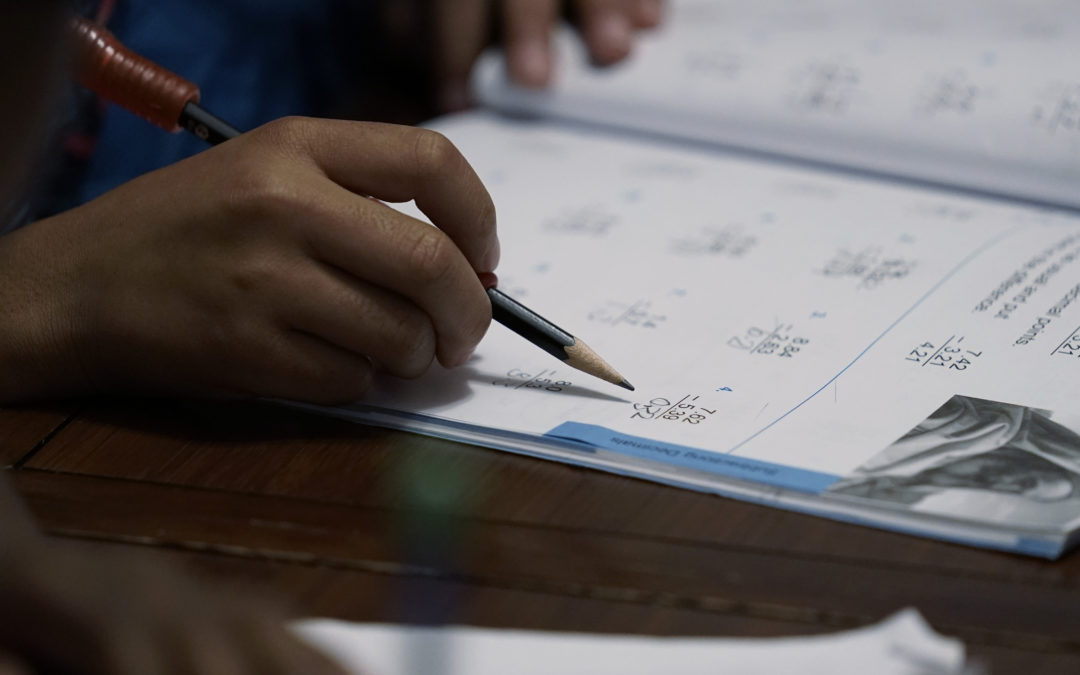
by David Crary, AP National Writer | Jul 27, 2021 | Commentary, Headline News |

Felicity Brown, 9, uses a workbook to practice math with her parents and siblings at home in Austin, Texas, on Tuesday, July 13, 2021. After homeschooling during the pandemic, the Brown family has switched to homeschooling their kids permanently using a Catholic-based curriculum and won’t be sending them back to in-person schools in the fall. (AP Photo/Eric Gay)
Although the pandemic disrupted family life across the U.S. since taking hold in spring 2020, some parents are grateful for one consequence: They’re now opting to homeschool their children, even as schools plan to resume in-person classes.
The specific reasons vary widely. Some families who spoke with The Associated Press have children with special educational needs; others seek a faith-based curriculum or say their local schools are flawed. The common denominator: They tried homeschooling on what they thought was a temporary basis and found it beneficial to their children.
“That’s one of the silver linings of the pandemic — I don’t think we would have chosen to homeschool otherwise,” said Danielle King of Randolph, Vermont, whose 7-year-old daughter Zoë thrived with the flexible, one-on-one instruction. Her curriculum has included literature, anatomy, even archaeology, enlivened by outdoor excursions to search for fossils.
The surge has been confirmed by the U.S. Census Bureau, which reported in March that the rate of households homeschooling their children rose to 11% by September 2020, more than doubling from 5.4% just six months earlier.
Black households saw the largest jump; their homeschooling rate rose from 3.3% in the spring of 2020 to 16.1% in the fall.
The parents in one of those households, Arlena and Robert Brown of Austin, Texas, had three children in elementary school when the pandemic took hold. After experimenting with virtual learning, the couple opted to try homeschooling with a Catholic-oriented curriculum provided by Seton Home Study School, which serves about 16,000 students nationwide.
The Browns plan to continue homeschooling for the coming year, grateful that they can tailor the curriculum to fit their children’s distinctive needs. Jacoby, 11, has been diagnosed with narcolepsy and sometimes needs naps during the day; Riley, 10, has tested as academically gifted; Felicity, 9, has a learning disability.
“I didn’t want my kids to become a statistic and not meet their full potential,” said Robert Brown, a former teacher who now does consulting. “And we wanted them to have very solid understanding of their faith.”
Arlena Brown, who gave birth to a fourth child 10 months ago, worked as a preschool teacher before the pandemic. Homeschooling, she says, has been a rewarding adventure.
“In the beginning, the biggest challenge was to unschool ourselves and understand that homeschooling has so much freedom,” she said. “We can go as quickly or slowly as we need to.”
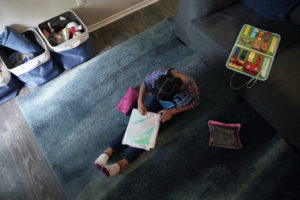
Felicity Brown, 9, draws as she takes a break from math practice at her home in Austin, Texas, Tuesday, July 13, 2021. After homeschooling during the pandemic, the Brown family have switched to homeschooling their kids permanently using a Catholic-based curriculum and won’t be sending them back to in-person schools this fall. (AP Photo/Eric Gay)
Race played a key role in the decision by another African American family to homeschool their 12-year-old son, Dorian.
Angela Valentine said Dorian was often the only Black student in his classes at a suburban Chicago public school, was sometimes treated unfairly by administrators, and was dismayed as other children stopped playing with him.
As the pandemic eased, the family decided to keep Dorian at home and teach him there, using a curriculum provided by National Black Home Educators that provides content for each academic subject pertaining to African American history and culture.
“I felt the burden of making the shift, making sure we’re making the right choices,” Valentine said. “But until we’re really comfortable with his learning environment, we’ll stay on this homeschool journey.”
Charmaine Williams, who lives in the St. Louis suburb of Baldwin, also is using the National Black Home Educators curriculum as she homeschools her 10-year-old son, Justin, and 6-year-old daughter, Janel.
Williams said she and her husband tried two previous stints of homeschooling for Justin after school officials complained about his behavior. Now — with the new curriculum and an accompanying support network — they feel more confident about choosing it as a long-term option.
“At school, children have to follow a certain pattern, and there’s bullying, belittling — compared to being home where they’re free to be themselves,” Williams said.
“There’s no turning back for us now,” she added. “The pandemic has been a blessing — an opportunity to take ownership of our children’s education.”
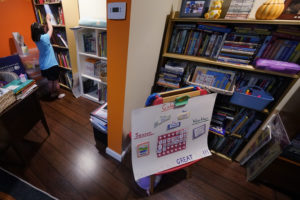
Lily Osgood, 7, selects a book to read from the family library of nearly 2,000 books she shares with her brother, Noah, Tuesday, July 20, 2021, in Fairfax, Vt. The Osgood children will continue to be homeschool this upcoming school year. As the pandemic took hold across the United States in the spring of 2020, it brought disruption and anxiety to most families. Yet some parents are grateful for one consequence: they are now opting to homeschool their children even as schools plan to resume in-person classes. (AP Photo/Charles Krupa)
Joyce Burges, co-founder and program director of National Black Home Educators, said the 21-year-old organization had about 5,000 members before the pandemic and now has more than 35,000.
Many of the new families experienced difficulties, including lack of internet access, that limited their children’s ability to benefit from virtual learning during the pandemic, Burges said.
“It got so they didn’t trust anything but their own homes, and their children being with them,” she said. “Now they’re seeing the future — seeing what their children can do.”
For some families, the switch to homeschooling was influenced by their children’s special needs. That’s the case for Jennifer Osgood of Fairfax, Vermont, whose 7-year-old daughter Lily has Down syndrome.
Having observed Lily’s progress with reading and arithmetic while at home during the pandemic, Osgood is convinced homeschooling is the best option for her going forward.
She has made the same decision for her 12-year-old son Noah, who didn’t like the remote classes offered by his public school in the spring of 2020, and did homeschooling throughout the 2020-21 school year. It went so well that they want to continue for at least a few more years.
“He told me he was learning so much more at home than he ever did in school,” Osgood recalled. “He said, ‘School is just so chaotic — we don’t get very much done in any particular class. Here, I sit down, you tell me what to do, and minutes later I’m done.'”
Heather Pray of Phoenix, Maryland, says homeschooling has been a major success for her 7-year-old son, Jackson, who has autism. The family made the switch because Jackson was struggling with the virtual learning that his school provided during the pandemic.
“My son did great (with homeschooling), even with just two hours of schoolwork a day,” Pray said. “I got him into piano lessons, taught him to read.”
Pray is also homeschooling her daughter, Hayley, who’s going into 7th grade and had been attending a Christian school.
“I had no idea how this was going to go — I just dove in headfirst,” said Pray. “I felt God was holding my hand.”
The Gonzalez family from Appomattox, Virginia — who are devout Catholics — opted to homeschool their three sons, ages 9, 13 and 15, after their Catholic school in Lynchburg closed in 2020 due to falling enrollment.
They’re using the Catholic-focused curriculum from Seton Home Study School, which Jennifer Gonzalez, the boys’ mom, described as rigorous but well-organized.
“My kids have just excelled,” she said. “We’re able to be home and be together.”

by Caroline Sumlin, Urban Faith Contributing Writer | Jul 9, 2021 | Headline News, Relationships |
Video Courtesy of Towanna Burrous
Back in the day, I used to watch this show called, Scrubs. Do you remember it? You know, Donald Faison and some other people? To be honest, I just watched the show for Donald Faison because he was from Clueless, and I loved the movie Clueless when I was younger. There was one thing I loved most about the show — the theme song. I love theme songs in general. Perhaps that makes me weird, but, whatever. Anyway, the theme song for Scrubs went like this:
I can’t do this all on my own. No, I’m no, I’m no superman.
I’m no superman.
I loved the song so much that I looked it up and put the full version on my iPod Nano. Remember those? I’m taking you back down memory lane, aren’t I? The song is by a band called Laslo Bane. I think I played that song at least 25 times a day when I was in high school. It really resonated with me because I was that girl who always felt like she needed to be superwoman. I thought that I needed to do it all, be it all, and do everything perfectly.
I know I’m not the only one who has ever felt this way.
I think part of the reason we tend to have this mentality is because our society tells us that we have to be perfect. Our society tells us that the key to success is to be “busy” and to run ourselves into the ground and to live off of coffee and little sleep. Our society makes us feel like we should be able to do everything perfectly and without help.
This is especially true in the Black community and even more true for us Black moms. This is especially, especially true for Black, Christian mamas. We strive to be the perfect Proverbs 31 woman, so we hold ourselves up to the highest standards and then pride ourselves into achieving those standards with absolutely no help. We are the keepers of the household, we are the makers of the meals, we are the cleaners of the spills, and we do it all without showing an ounce of our exhaustion. If we ask for help, we are viewed as weak and, of course, that is a no-no.
I became a mom 3 months ago, and now that I’m a mom, I have had many moments being trapped inside the “supermom mentality.” I was convinced I didn’t need help when my daughter was first born. I felt like I needed to do it all and I needed to be perfect while doing so.
It took me crying out to God in a state of exhaustion to realize that we put this mentality on ourselves. Who is telling us that we have to be supermom? Besides society and pressure from social media, there is no written document that states that we have to conform to this “supermom mentality.”
I’m here to tell you today that you don’t have to do it all. You don’t have to be supermom. That’s what the Holy Spirit is for! Our God is the One who wants to do it all and be it all for us.
“Each time he said, “My grace is all you need. My power works best in weakness.” So now I am glad to boast about my weaknesses, so that the power of Christ can work through me.” (2 Corinthians 12:9 NLT)
Do you see that? We GET to be weak. Holy Spirit wants us to! No more of this strong front, dear friend. Lean into Christ. Be weak. And let His grace be sufficient for you.
You may be thinking, I hear what you’re saying, but how? I just can’t let myself be weak, or I don’t know where to start!
Girl, I hear you. Let’s talk about it.
Ask the Lord for help
It sounds simple, but of course it isn’t. Hear me out. It can be hard to ask someone else for help. Personally, I don’t want to impose or inconvenience someone, so I just try to do everything by myself. When I had my daughter, I didn’t ask anyone for help except my husband. But, The Lord knew that I needed so much help as a sleep deprived, postpartum mama. He sent me help that I could not refuse. I would receive text messages from faithful friends telling me that they were on the way over to drop off some food. I didn’t have to ask them for the very thing I needed. Holy Spirit guided them to help me when I needed it the most. All I had to do was receive it with open arms and be thankful. When you ask God for help, He will meet you where you are and send you help just as you need it.
Lean on your spouse and loved ones
Mamas, your spouse and loved ones are there for you. They WANT to help and your partner NEEDS bonding time with his child, too. And, of course, your family and friends enjoy spending time with the little ones as well. I know it can be hard to not be the overbearing, overprotective mama bear. Trust me. I’m guilty of this, myself. I have a tendency to hover over my husband instead of just letting him have his time with our little one. Hello? I should be napping as soon as he gets home and takes her! Why do I feel the need to keep hovering? Better yet, why do I feel the need to ask myself, “What needs to be done now?” instead of taking the opportunity to rest. Now, I’m not discouraging productivity, but there is nothing wrong with saying, “no” to those dishes and taking time to recharge when you can.
Also, just talk to your spouse about how you’re feeling. Don’t keep it in. He doesn’t expect you to be supermom, I promise.
Say yes to what matters
Everything is not created equal. As women, and especially as moms, we often say yes to everything. We try to do everything and do it all well. Then, when we get burned out and realize that our efforts created mediocre results. We need to learn to only tackle things that truly matter on a daily basis. For me, that sometimes means putting aside working on the budget to help my stepson with homework. Or, that might mean saying yes to quality time with my spouse and saving that phone call for tomorrow. When we choose just a few things to focus on and do well instead of loading our plates with all of the things, we won’t feel so stretched thin and the “supermom mentality” will fade.
Mamas, we need to realize that our spouse and kids are who’s important. Not what society expects of us, not what we see other moms posting on social media, not what our friends are doing with their kids, etc. Our kids don’t care if our hair is messy or if the house is clean. Our spouse doesn’t care if our kids are perfectly dressed or if we were able to finish that load of laundry today. Our spouses love us and our kids just need us. They beautifully accept us as we are. In their eyes, we are their supermoms. And I know that I don’t have to finish all of the chores for my husband to see me as a “superwife.”
Jesus loves us the same way. He meets us right where we are and gives us grace. We have nothing to prove. Nothing.
Now, go take a deep breath and hug your kiddos. They love you.
Do you have additional tips for today’s busy moms? Share them below.

by T-Kea Blackman | May 21, 2021 | Headline News |
Video courtesy of CBN News
Republished in honor of Mental Health Awareness Month.
When you see a man walking down the street talking to himself, what is your first thought? Most likely it’s, “He is crazy!” What about the lady at the bus stop yelling strange phases? You immediately become guarded and move as far away from her as possible. I know you’ve done it. We all have.
We are so quick to judge others on the surface level without taking the time to think that maybe God is placing us in a situation for a reason. Maybe it is a test and in order to pass, you must show love and compassion for something or someone that you do not understand.
Perhaps the man or woman you judge are suffering from a mental illness. However, do not be deceived by appearances, because mental illness does not have “a look.”
More Than What Meets The Eye
When most people look at me, they see a successful, 20-something-year-old woman who is giving of herself and her time. In the past, they would only see a bubbly, out-going, praying and saved young lady who is grounded in her faith. When outsiders look at me, they often see someone with two degrees from two of America’s most prestigious institutions, an entrepreneur who prides herself on inspiring others to live life on purpose, and simply lets her light shine despite all obstacles.
However, what so many do not know is that there was a time when I was dying on the inside. On a beautiful summer morning, at the tender age of 25, I suddenly felt sick. It was not the kind of sick where one is coughing with a fever and chills. I felt as if there were a ton of bricks on top of my body and I could not move my feet from the bed to the floor.
Then, there were times when I was unable to stop my mind from racing. I had a hard time concentrating on simple tasks and making decisions. My right leg would shake uncontrollably and I would get so overwhelmed by my mind.
It was in those moments when I inspired to begin researching depression and anxiety. I had the following thoughts as I read the symptoms: “This sounds like me. But, if I’m diagnosed with depression and anxiety, does this mean I am no longer grounded in my faith? Would I walk around claiming something that the Christians deemed as not being a “real” disease? Am I speaking this illness into existence?”
Who Can I Turn To?
According to the National Association of Mental Illness (NAMI), Depression is a chemical imbalance in the brain and mood disorder that causes persistent feelings of sadness, hopelessness, guilt and one cannot “just snap out of it.”
NAMI also describes anxiety as chronic and exaggerated worrying about everyday life. This can consume hours each day, making it hard to concentrate or finish routine daily tasks.
As the months passed, my symptoms became progressively worse and I became so numb to life. I slowly began to open up to my church family and some of the responses I received were so hurtful. I received a variety of suggestions on everything from speaking in tongues for 20 minutes to avoiding medication because it would make my condition worse.
As a result, I did not know what to do. I felt lost and alone, because a community that I turned to first in my time of trial and tribulation did not understand me. I was so deep in my depression that praying and reading my Bible was too difficult of a task to complete.
As time went on, I eventually went to the doctor and guess what? I was right. I went undiagnosed for over 10 years. Imagine the consequences if a person with cancer, AIDS/HIV or diabetes went undiagnosed.
The Breaking Point
I eventually found myself in the hospital after a friend called 911 to notify them of my suicide attempt. I was so removed from life that when the doctor asked me the day of the week and date, I could not tell him.
Honestly, I can tell you a number of reasons why I tried to commit suicide. Some of them were external factors, such as finances. Some of it was burn-out. Some of it was unresolved childhood issues and genetics.
However, after learning my family medical history, I discovered that several members of my family battled mental illness during their lifetime. Both of my parents battled mental illness, and my grandfather informed me about the time he tried to commit suicide at the age of 14. My uncle was admitted to the hospital due to schizophrenia.
A Bright Future
Over time, I’ve come to the conclusion that I have no reason to feel ashamed or embarrassed. God has placed amazing people in my life from family members, friends who are simply extended family, doctors, therapists, and medication.
While my goal is not to rely on medication for the rest of my life, I am grateful that I found something that works while I work through recovery. Looking back to where I was about two years ago, I would have never saw myself living life with depression and anxiety.
I believe in the power of prayer and God’s word. As the scripture states in James 2:17, “Faith by itself isn’t enough. Unless it produces good deeds, it is dead and useless.” This leads me to believe that no matter how difficult the situation is, I will have to work towards healing and recovery even though I have a strong foundation and faith.
Do you have words of encouragement for someone who is battling mental illness? Share your thoughts below.






